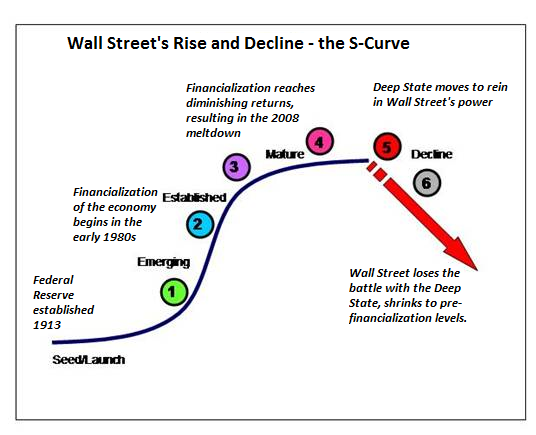Stocks Have Reached a Permanently High Plateau
A permanently high plateau of stock prices is a marvelous innovation.
Somebody said this before, of course, but one glance at a chart of the S&P 500 tells us that stock prices have
reached what looks like a permanently high plateau. How can we identify a
permanently high plateau? One sign is price never touches the 50-week
moving average (MA), much less the 200-week MA: prices just keep
marching higher in a volatility-free permanently rising plateau.
reached what looks like a permanently high plateau. How can we identify a
permanently high plateau? One sign is price never touches the 50-week
moving average (MA), much less the 200-week MA: prices just keep
marching higher in a volatility-free permanently rising plateau.
It's almost like a film set, where the special effects department (i.e. the Financial Singularity) has been called in to get rid of pesky volatility and fluctuations.
Memo to Head Office: Done. The MACD indicator has been locked into a permanently high plateau as price marches higher in an orderly fashion.
A permanently high plateau of stock prices is a marvelous innovation: you can practically set your watch to the steady tick of new all-time highs, and all you need to plan your retirement or cash-out of your stock options is a ruler and a pencil--just extend the price line as far forward as you want, and calculate your wealth.
The only downside of this permanently high plateau of stock prices is that it eliminates the need for the financial punditry and the workforce of money managers. With bearish influences and volatility both eradicated, there is nothing left to talk about except the upward slope of the permanent plateau.

As for money management--for most people, there's no need to play around trying to beat the index by a tiny percentage: just lock your money up in a index fund and watch it grow, month after boring month, year after boring year.
The Federal Reserve's testimony to Congress will be boringly predictable: "stock prices continue to rise in an upward sloping permanently high plateau." Congress and the Fed will congratulate their outstanding management of the economy, and once behind closed doors, congratulate the Special Effects crew for their fine work maintaining the permanently high plateau.
Our permanently high plateau of stock prices greatly simplifies life. If you own enough of the stock market, you can calculate your wealth next year and order a new private jet right now, because you know you'll be $25 million richer by then.
And of course the economy will thrive on this steadily rising permanently high plateau because those new private jets will need to be manufactured and maintained, and small airports in wealthy enclaves will need to add space for the new private jets.
Let's face it: this permanently high plateau of stock prices is financial nirvana. Permanently high plateau has such a nice ring to it, doesn't it? Let's say it three times just for the pleasure of the alliteration: permanently high plateau, permanently high plateau, permanently high plateau.
Sourced from Charles Hugh Smith from Of Two Minds





